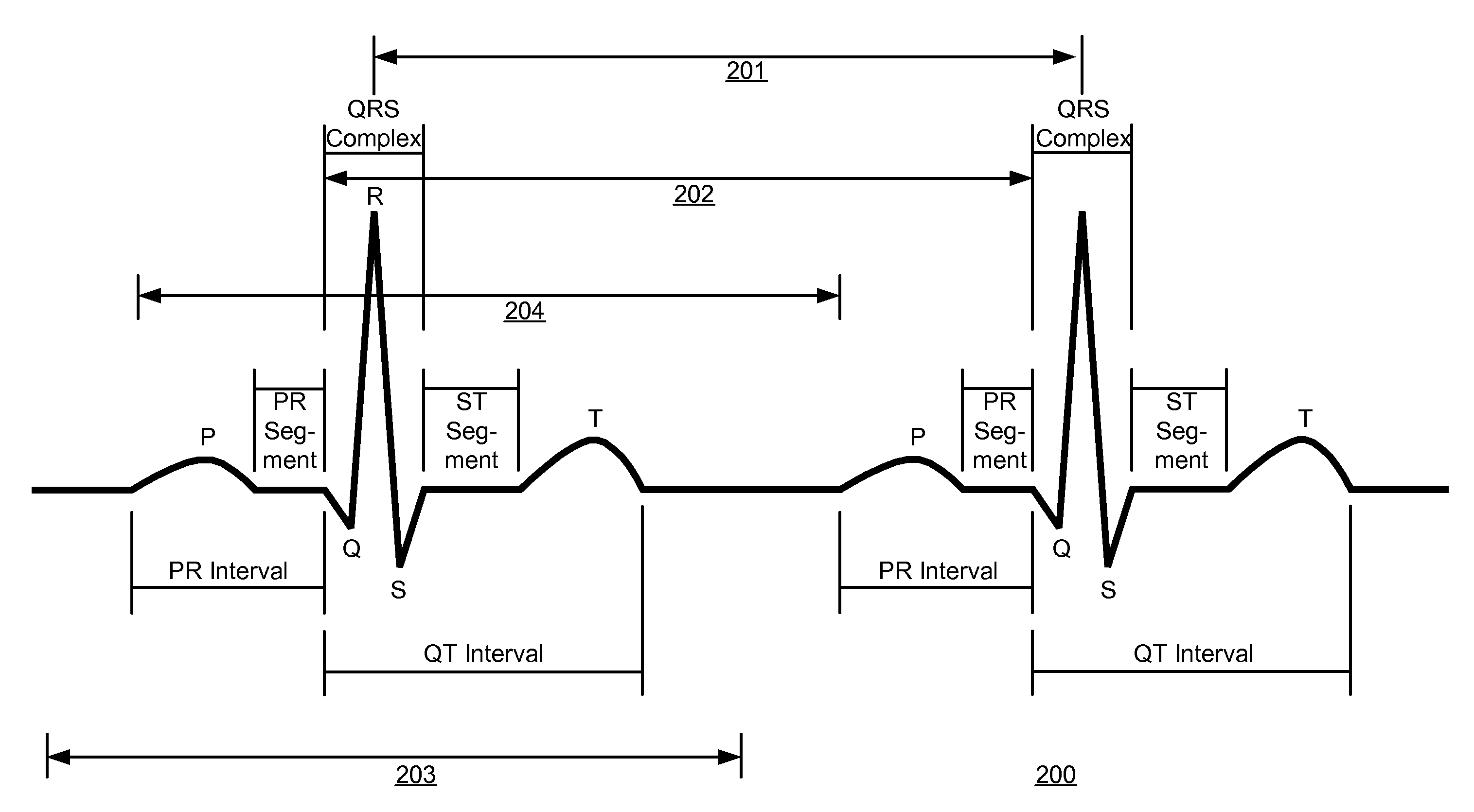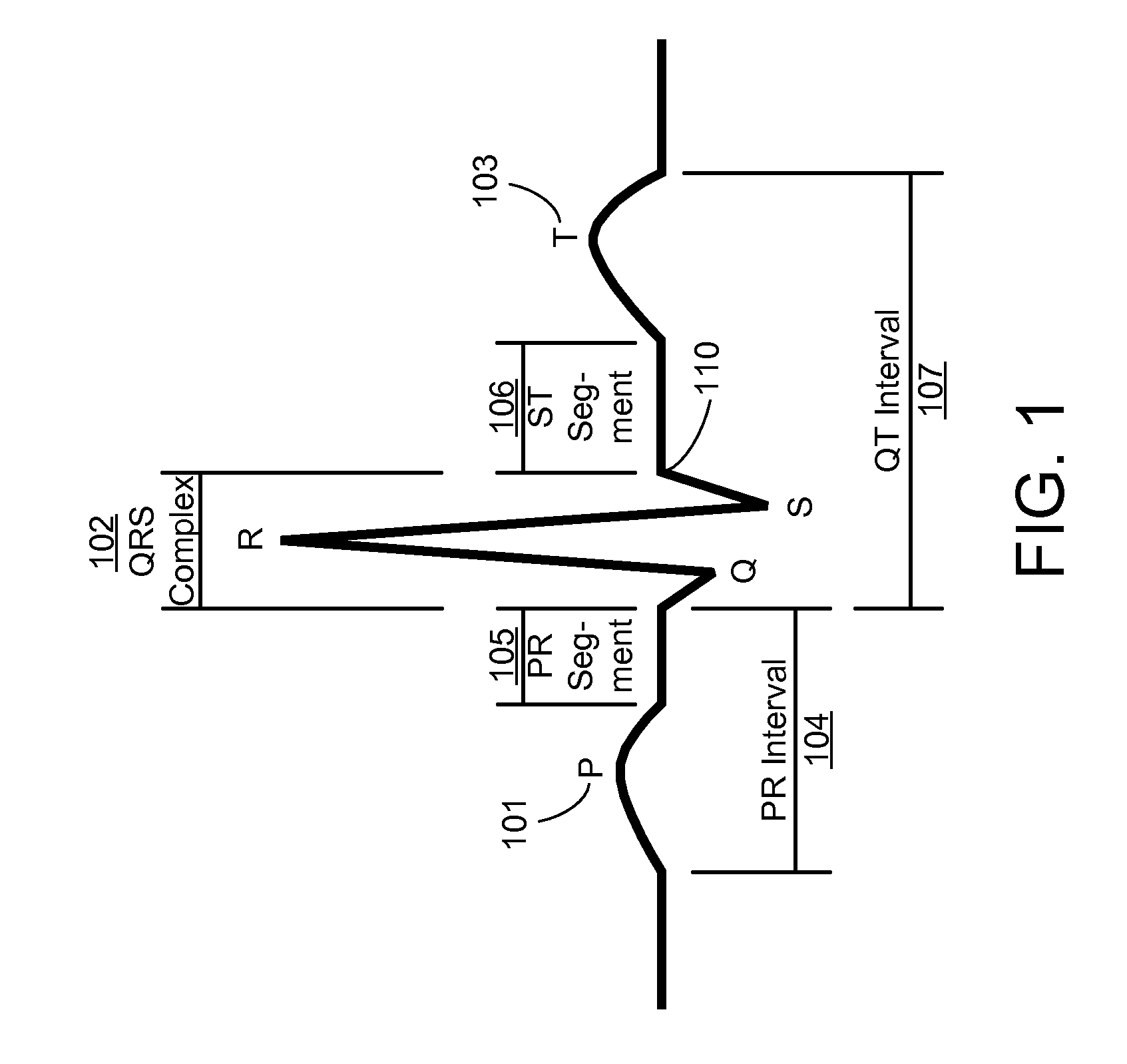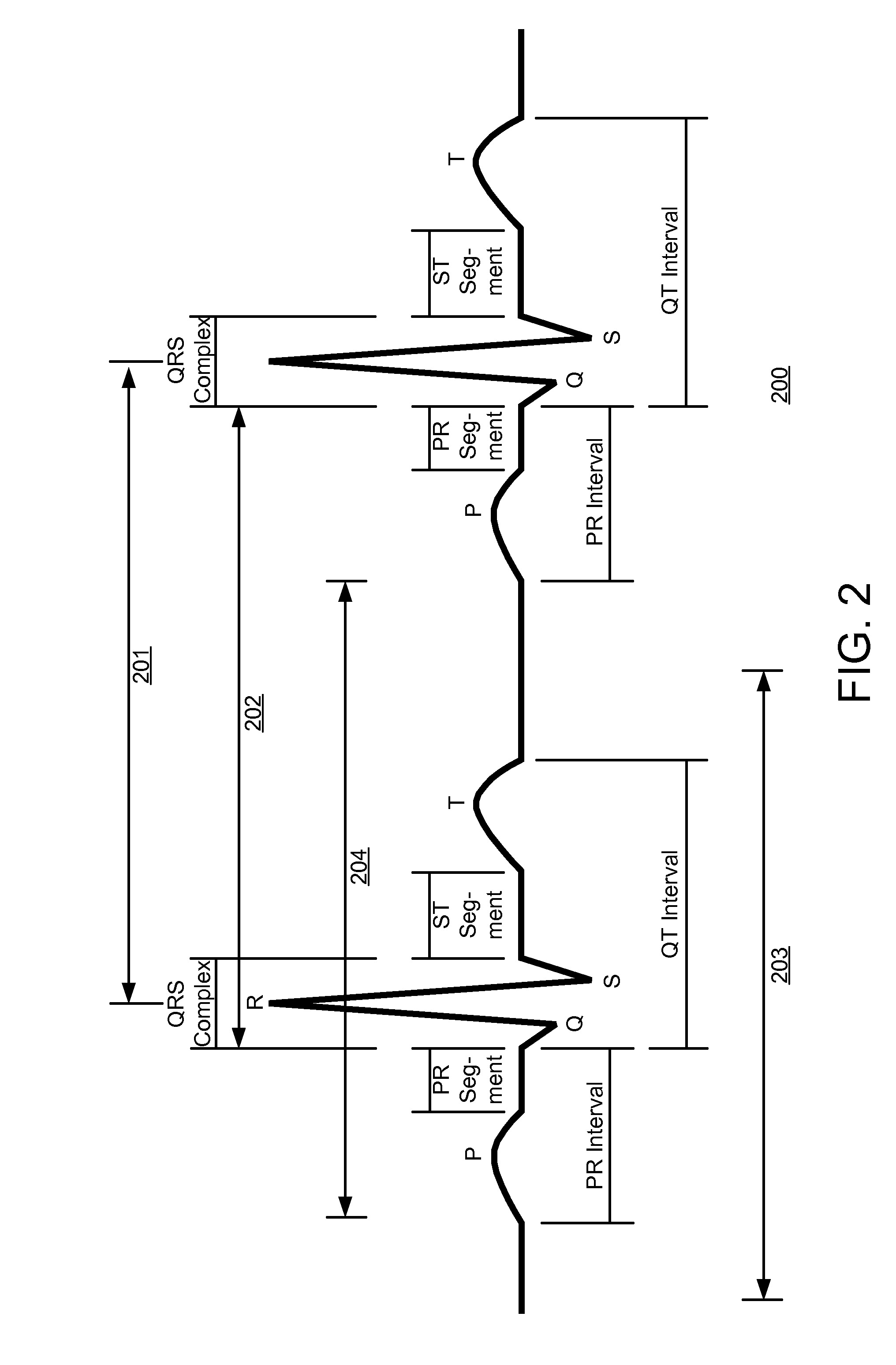Methods for Detection of Cardiac Arrhythmias
a cardiac arrhythmia and detection method technology, applied in the field of detecting cardiac arrhythmias, can solve the problems of difficult parameter measurement of atrial rate, lack of conventional prior art methods for detecting af using atrial rate measurements, and observed high-chaotic sequence of heartbeats
- Summary
- Abstract
- Description
- Claims
- Application Information
AI Technical Summary
Benefits of technology
Problems solved by technology
Method used
Image
Examples
Embodiment Construction
[0048]The present invention is directed towards a method for detecting AF events from a sequence of heartbeat measurements where the origin of each heartbeat is not known, as is often the case with basic monitoring equipment, such as, but not limited to: heart rate monitors; event recorders; implantable pacemakers; and non-ECG heart rate measurement devices. The present invention is also directed towards transforming instantaneous heart rate signals into an AF output.
[0049]The vast majority of ‘confounding ECG abnormalities’ (i.e. non-AF ectopics that are falsely identified as AF) are caused by extended arrhythmias involving a combination of the sinus node and a single ectopic focus. Since successive heartbeats from the same focus, whether sinus or ectopic, typically have a low rate variability, the source of confounding variability occurs when switching from one state to another.
[0050]Depending on the switching pattern between these two foci, four groups of RR intervals are possibl...
PUM
 Login to View More
Login to View More Abstract
Description
Claims
Application Information
 Login to View More
Login to View More - R&D
- Intellectual Property
- Life Sciences
- Materials
- Tech Scout
- Unparalleled Data Quality
- Higher Quality Content
- 60% Fewer Hallucinations
Browse by: Latest US Patents, China's latest patents, Technical Efficacy Thesaurus, Application Domain, Technology Topic, Popular Technical Reports.
© 2025 PatSnap. All rights reserved.Legal|Privacy policy|Modern Slavery Act Transparency Statement|Sitemap|About US| Contact US: help@patsnap.com



